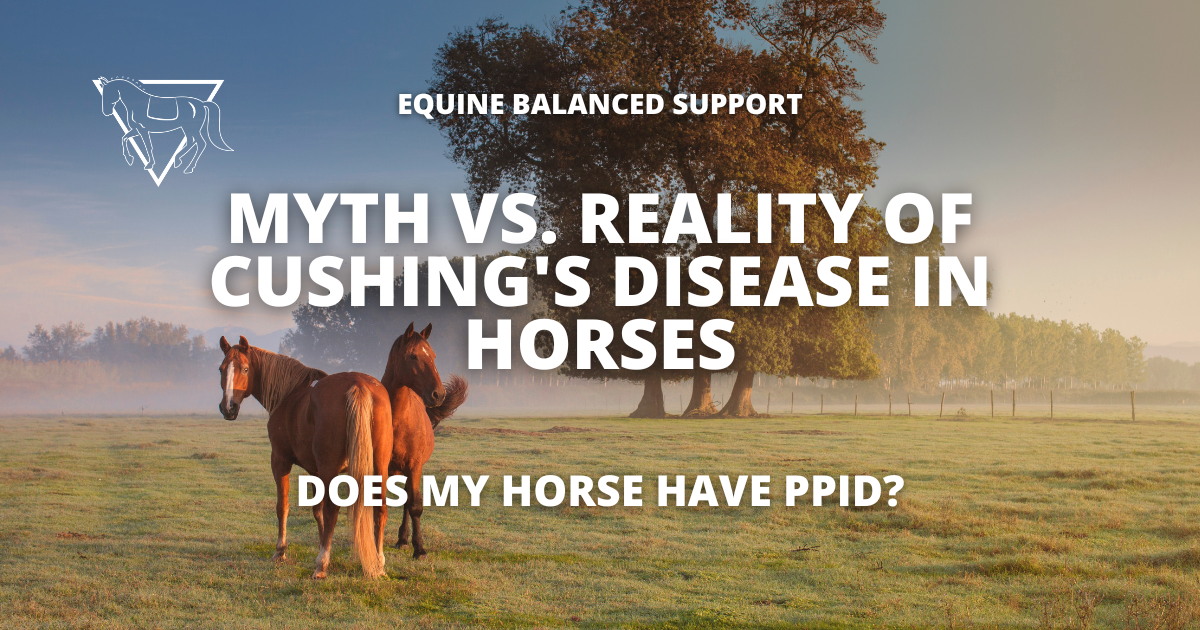Myth vs. Reality of Cushing's Disease in Horses

Cushing’s Disease in Horses: Myths, Realities, and Smarter Care Strategies
Often misunderstood, Cushing’s Disease—more accurately known as Pituitary Pars Intermedia Dysfunction (PPID)—affects a significant number of horses as they age. Unfortunately, myths about the condition delay diagnosis and proper care. In this article, we break down common misconceptions and provide practical advice for managing horses with Cushing’s effectively.
Myth vs. Reality
Myth: Only senior horses get Cushing’s.
Reality: While PPID is more prevalent in older horses, cases in horses as young as 7 have been documented. Regular health screening is essential regardless of age.
Myth: A curly coat is the only symptom.
Reality: PPID symptoms vary. Common signs include increased thirst and urination, muscle wasting, laminitis, and recurrent infections. Early detection is key.
Myth: It’s untreatable.
Reality: Though incurable, PPID can be successfully managed through medication like pergolide and proper nutritional support.
Myth: Cushing’s and EMS are the same.
Reality: These are distinct conditions, though horses can suffer from both. EMS involves insulin dysregulation, while PPID originates in the pituitary gland.
Myth: Cushing’s horses should retire.
Reality: With well-managed care, many horses with PPID can be lightly ridden and enjoy fulfilling lives.
Smarter Feeding for Cushing’s Management
Horses with Cushing’s often benefit from a forage-first, low-NSC diet. Monitoring sugar and starch intake reduces the risk of insulin spikes that can lead to laminitis. For these horses, every calorie counts—and so does every ingredient.
Recommended Products for PPID Support
- Med Vet Magnesium 5,000 Pellets – Supports muscle function, metabolic balance, and neurological calm in horses with metabolic challenges.
- Med Vet Levelor – Herbal hormonal support to help rebalance endocrine function naturally.
- Grazers Nutri-Treats – A safe, low-sugar treat option (<10% sugar + <4% starch) perfect for Cushing’s horses.
- Med Vet Exceed 6-Way – Comprehensive joint, hoof, gut, and metabolic support all in one economical pellet, ideal for horses with PPID or EMS.
Final Thoughts
Knowledge is your horse’s first line of defense. By separating facts from fiction and choosing well-researched care solutions, you can ensure your horse with Cushing’s lives a vibrant and healthy life.





My horse didn’t show the usual signs of Cushing’s, so it wasn’t even really on my radar. I’m so thankful we decided to test him anyway, getting that diagnosis early meant we could start him on Prascend right away. I truly believe it’s made all the difference for his quality of life.
Leave a comment